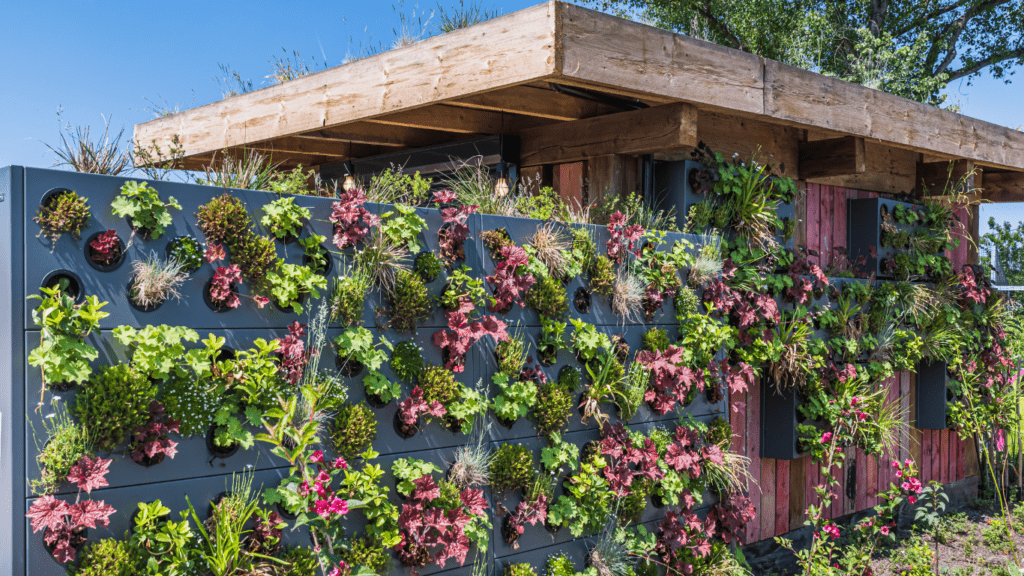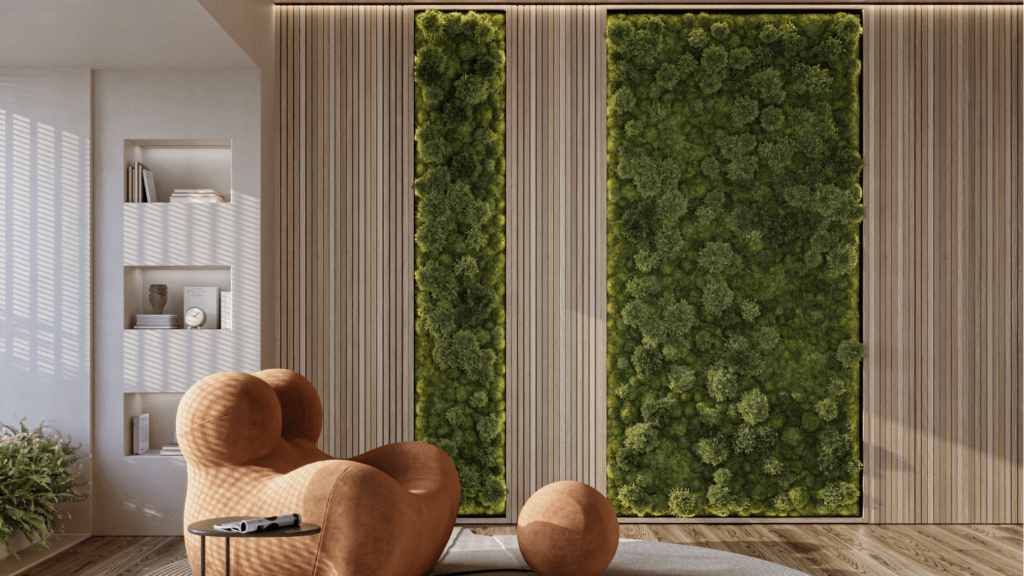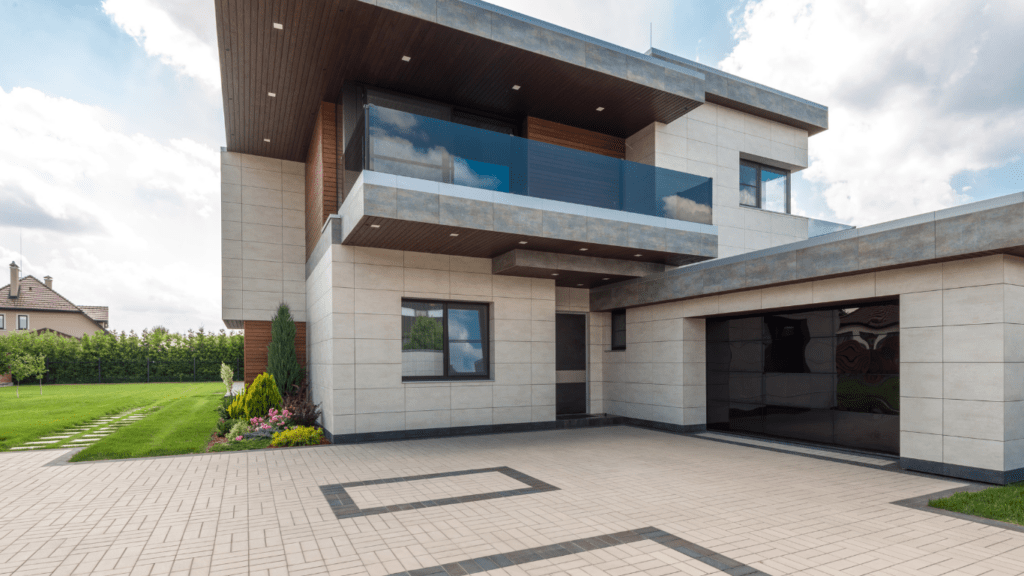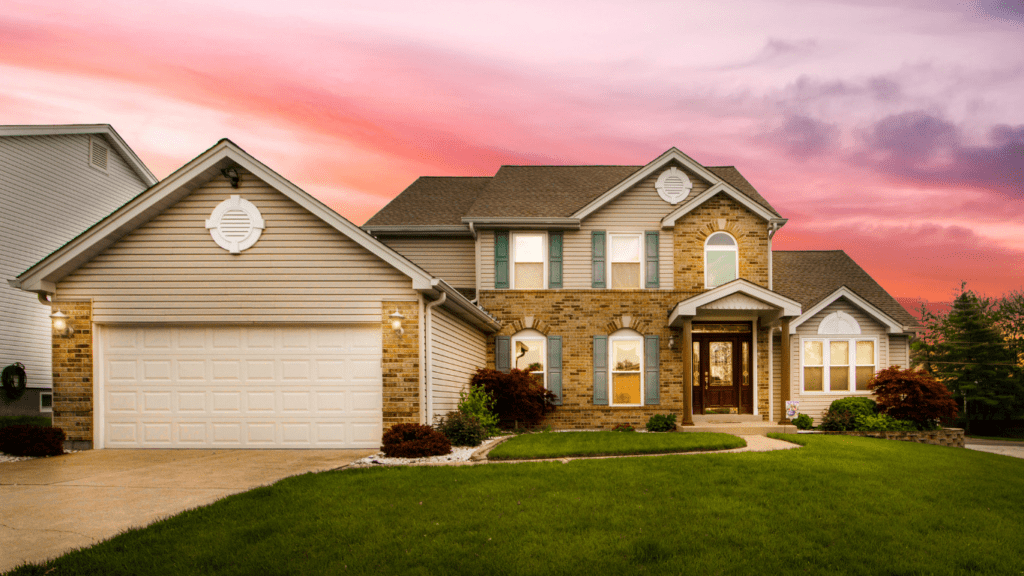The Evolution of Vertical Gardens
Vertical gardens aren’t a new concept; they’ve evolved significantly. Ancient civilizations, like the Hanging Gardens of Babylon, showcased early forms of vertical planting. During the Renaissance, climbing plants adorned trellises and walls in European gardens. However, modern green walls surged in popularity, attributed to Patrick Blanc’s innovative designs in the late 20th century.
In recent decades, vertical gardens have become more sophisticated. Advances in hydroponics and modular growing systems enable easier installation and maintenance. This evolution has made green walls accessible to homeowners who seek sustainable and aesthetic improvements for their exteriors. With these advancements, vertical gardens now thrive in various climates and conditions, from urban settings to rural landscapes.
Benefits of Vertical Gardens
Vertical gardens offer numerous advantages that extend beyond mere aesthetics. I’ll break down some key benefits to shed light on their growing popularity.
Environmental Impact
Vertical gardens, often referred to as green walls, create substantial environmental benefits. They improve air quality by filtering pollutants and releasing oxygen. NASA’s Clean Air Study found plants like spider plants and peace lilies effective in removing toxins such as formaldehyde. Also, these gardens help reduce the urban heat island effect. Plants absorb sunlight, cooling the surrounding air and lowering temperatures. As a result, green walls can contribute to energy savings by reducing the need for air conditioning.
Aesthetic Appeal
Vertical gardens significantly enhance the visual appeal of home exteriors. They introduce lush, living decor that changes with the seasons. This dynamic quality adds unique character to any architectural style. I’ve observed that many homeowners use green walls to create striking focal points or conceal unsightly areas. Moreover, designers often incorporate different plants, like ferns and succulents, to craft textured and colorful patterns. This versatility allows for endless customization, fitting any personal or architectural aesthetic preference.
Space Efficiency
In urban settings, space is often limited, making vertical gardens a practical solution. They use wall space rather than valuable ground area, maximizing the potential for greenery in compact spaces. Vertical garden systems can be installed on small balconies, narrow side yards, or building facades. The modular nature of these systems allows homeowners to scale their green walls according to available space and budget constraints. This adaptability makes it feasible for anyone to enjoy the benefits of a garden, regardless of space limitations.
Types of Green Walls

Green walls come in various designs, catering to different aesthetic preferences and functional needs. Each type offers unique benefits, making it easier to find the perfect fit for any home exterior.
Modular Systems
Modular systems consist of pre-planted panels that attach to the wall structure. Each panel has its own soil or substrate, allowing plants to grow independently. This system provides flexibility, as individual modules can be replaced or rearranged easily. Common plants include succulents, ferns, and herbs.
Living Walls
Living walls, also known as “bio walls,” use a continuous soil system or a hydroponic setup to support plant growth. Plants root directly into the wall, creating a seamless, lush appearance. These walls often include built-in irrigation systems to maintain plant health. Popular choices include flowering plants, ferns, and evergreen species.
Trellis Systems
Trellis systems involve plants that climb and spread across a supportive framework. The trellis attaches to the exterior wall, and climbing plants like:
- ivy
- jasmine
- climbing roses
fill in the structure over time. This type of green wall is ideal for creating a natural, organic look and can be a less expensive option compared to other systems.
Installation Process
Vertical gardens transform home exteriors into vibrant, eco-friendly spaces. Proper planning and selection of plants ensure a thriving green wall.
Planning and Design
Successful vertical garden installation starts with careful planning. First, I assess the wall’s structural integrity to support the weight of the living wall system. Waterproofing is essential to protect the wall from moisture. I decide on the type of vertical garden system based on desired aesthetics and functionality, such as modular systems, living walls, or trellis systems. Incorporating automated irrigation systems can ensure consistent watering, especially for hydroponic setups.
Choosing the Right Plants
Choosing plants suited for vertical gardens is critical. I select plants based on light exposure, climate, and maintenance requirements. For shaded areas, I might choose ferns, philodendrons, or ivy. Sunlit areas can feature succulents, herbs, or flowering vines. Mixing various plant types creates a visually appealing and resilient green wall. I also consider plant growth patterns to avoid overcrowding and ensure each species thrives.
Maintenance Tips
- Regular maintenance keeps green walls healthy and vibrant.
- Inspect the irrigation system periodically to ensure even water distribution.
- Pruning helps manage plant growth and prevents overgrowth.
- Check for pests and diseases, treating any issues promptly to maintain plant health.
- Fertilizing plants as needed ensures they receive essential nutrients.
- Regularly replacing any unhealthy or dead plants keeps the wall looking its best.
By following these steps, homeowners can enjoy lush, sustainable vertical gardens that enhance their home’s exterior.
Case Studies and Examples
Vertical gardens’ rising popularity is evident in various successful applications. Following are examples of how homeowners and businesses have transformed spaces with green walls.
Residential Applications
Residential vertical gardens enhance aesthetics and functionality. In Los Angeles, homeowners installed a modular system on a small townhouse patio. This small patio garden featured succulents, herbs, and flowering plants, transforming the space into a green oasis while utilizing limited space efficiently.
A family in Chicago opted for a living wall system in their backyard. The living wall included seasonal vegetables and herbs, providing a source of fresh produce and reducing grocery costs. It also acted as an insulating layer, helping the family lower energy costs by regulating temperatures on the adjacent wall.
Commercial Applications
Commercial spaces leverage vertical gardens for sustainability and branding. In Madrid, a luxury hotel constructed a 5-story living wall facing its courtyard. The lush wall, featuring a variety of tropical plants, not only enhanced the visual appeal but also improved air quality, creating a healthier environment for guests.
A London-based office building incorporated a trellis system on its facade. This trellis system supported a mix of ivy and climbing roses, giving the building a distinct, natural look. It attracted more tenants interested in eco-friendly building practices and reduced the urban heat island effect, making the building more energy-efficient.



 Harry Marriott – Lead Interior Stylist
Harry Marriott is Castle Shelf House’s Lead Interior Stylist, known for his keen eye for detail and expertise in modern and classic home designs. With a background in interior architecture, Harry brings innovative styling solutions to the forefront, ensuring that each home reflects a unique personality. His approach to furniture placement and design trends helps clients create harmonious living spaces that combine aesthetics with functionality.
Harry Marriott – Lead Interior Stylist
Harry Marriott is Castle Shelf House’s Lead Interior Stylist, known for his keen eye for detail and expertise in modern and classic home designs. With a background in interior architecture, Harry brings innovative styling solutions to the forefront, ensuring that each home reflects a unique personality. His approach to furniture placement and design trends helps clients create harmonious living spaces that combine aesthetics with functionality.
